
Website Personalization: What It Is & How To Do It The Right Way
Building a Personalization Blueprint with Conversational Marketing
Step 1: Create a Website Customer Journey Map
Step 2: Remove the Roadblocks in Your Funnel
Step 3: Be Personal and Specific
Step 4: Use Automation to Scale
You Have the Framework, Now Become An Expert
Personalization isn’t just having a name token in your email workflow.
No.
Personalization is a marketing movement that warrants more consideration in your strategy than ever before. And it’s what powerhouse marketing leaders are focusing on to stand out against the competition.
In a report from Gartner, 87% of marketing leaders are now looking to add personalization to their marketing strategy.
As with most trends in marketing, the shift towards personalization is driven by consumer demand.
The same Gartner report found that more than 78% of consumers want personalized marketing communication. Meaning if personalization isn’t top of mind for your brand, you’re already behind the curve.
Luckily, there’s an easy place to get started: your website.
Website Personalization: What It Is & How To Do It The Right Way
Before we look at the steps to personalize your website, let’s discuss the finer points of creating a successful personalization strategy.
What It Is And How To Monetize It
Website personalization is the process of using data to create “catered” experiences for users and web visitors. Examples of this include things like targeted selling from past browsing behavior.
This makes personalization a great tool for marketers. As it:
- Increases up- and cross-sell opportunities
- Speeds up the conversion process
- And builds greater brand loyalty and recognition
In fact, Gartner found that tailored experiences can increase repeat purchases and future buying intent by as much as 20%.
And they’re not the only ones touting the potential ROI impact. McKinsey reports those companies with some of the most successful personalization programs “…found proven ways to drive 5 to 15 percent increases in revenue and 10 to 30 percent increases in marketing-spend efficiency—predominantly by deploying product recommendations and triggered communications within singular channels.”
The Core Principles Of Personalization, According To Gartner
Website personalization has become a larger part of discussions around the customer experience. Because of this, Gartner advises companies to prioritize website optimization and personalization in their CX initiatives.
“Websites should deliver what your customers want or need in an engaging way that easily allows them to take action. A website that isn’t easy to use or understand and that offers no relevance can result in lost sales, squandered internal resources and damaged brand reputation — costs that are too high for companies to absorb.”
– Jane-Anne Mennella, Senior Director Analyst, Gartner.
However, many companies fail to execute personalization strategies that deliver results: 60% of companies with a personalization strategy find it to be ineffective.
The source behind this failure? A poor foundation from the get-go.
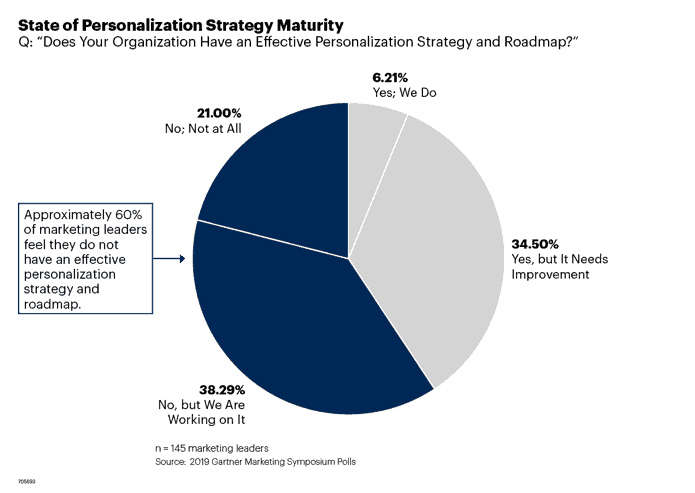
Before starting any personalization project, Gartner recommends applying three core principles:
- Focus on key barriers
Identify and remove barriers. The typical barriers when it comes to personalization include data, tech, content, people and strategy issues. Start simple, and look at the following first:- Focus on the data that matters: Too often marketers do needless data collection when only a few data points are needed to execute personalization.
- Don’t create barriers to content: Gated content is an instant turn off for many of today’s buyers. Companies should add a more personal touch to their inbound content moving forward by removing the gates and better assisting customers to get the information they need right off the bat.
- Invest in the right tech: Measurement and execution. Whatever website personalization tech you invest in should do at least one or two of these things. Similar to our conversations around data, too much tech can do more harm than good. AI chatbots are helpful tools for tracking and executing personalization at scale. Tracking tools like Google Analytics are perfect for measuring the impact of your personalization initiatives.
- Walk before you run
Experiment, tweak, rinse, repeat. As mentioned, measuring the ROI of your website personalization is important for optimizing over time. Singlegrain recommends focusing on things like total visits, bounce rates, conversion rates, etc. to track certain efforts. In addition, having a clear customer journey map of your digital touchpoints can help pinpoint where personalized interactions have the highest impact.
If you’re not sure where to get started, David Gerhardt has some ideas to spark your imagination. - Invest in talent
Onboard the skills and tech to get the job done. Earlier we mentioned the incredible strides AI has made in helping marketers scale personalization. However, the most successful personalization strategy strikes the right balance between human and technology. Behind every chatbot should be a salesperson ready to follow up.
Your website is often the first impression a buyer has with your company. So putting your best face forward is important to building a relationship later down the line.
Yes, this sounds daunting. But, as we’ll discuss throughout the rest of this article, it doesn’t have to be.
Building A Personalization Blueprint With Conversational Marketing
Conversational marketing is the ultimate personalization power move. It is the best way to start real-time conversations with customers and remove the need for complicated touchpoints and gated content.
Traditional website interactions involve complex funnels like the one shown below. ?
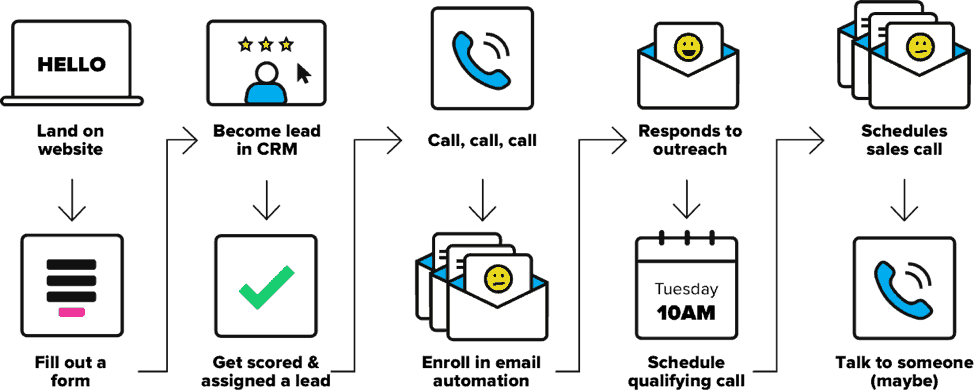
Funnels like this are problematic for a lot of reasons. But there are two that stick out:
- Not real-time: The entire process shown above can take anywhere from 30 minutes to 24 hours before a customer actually gets to the person or content they need.
- Not personal, not human: Forcing visitors through endless form fields is a clear reminder that you are a stranger. Whether B2B or B2C, people buy from people. The lack of dialog or conversation often makes these interactions feel more transactional than personal.
The beauty of conversational marketing is that it doesn’t completely blow up your current marketing and sales funnel. It optimizes it.
Through a combination of chatbots, AI and careful planning, Conversational Marketing can become an easy way to add personalization across your website and scale your marketing and sales funnel.
The next four steps will show you how.
Step 1: Create A Website Customer Journey Map
Adding personalization to your website starts with understanding a typical “customer journey” for your website visitors.
The funnel in the previous section is one example of a buyer’s journey on your website. Below we see another from Single Grain.
In addition to showing the touchpoints across a website, the image also shows the best metrics to track to understand where personalization should be used.
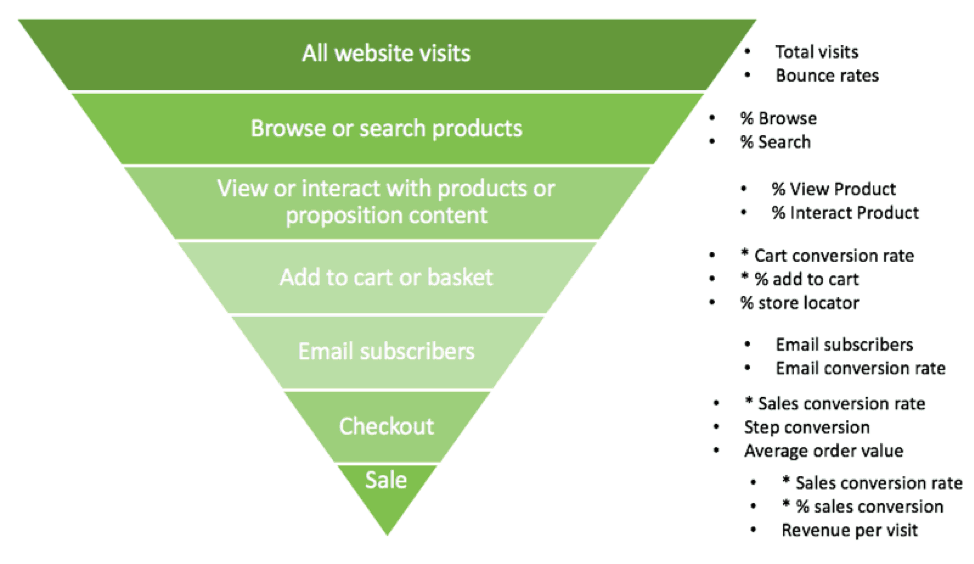
Understanding website journeys and analyzing the interactions and actions people have at each touchpoint is necessary for creating more personal and catered experiences.
Step 2: Remove The Roadblocks In Your Funnel
Let’s say you’re experiencing a low conversion rate on your new pricing page. You’re getting a lot of traffic, but little traction for sales. You added a demo button at the bottom of each pricing bucket, which in turn generates a pop-up form for a demo. But, few people are completing the form.
Take a look at the journey so far for your buyer:
Land on Page > Read the Information > Press a Button > Fill Out a Form
Your potential visitor has already given you a lot of cues that they’re interested in your product or services by just coming to your pricing page. Why are you making them jump through hurdles to start a conversation?
High intent pages like pricing pages, contact pages, and demo pages should be easy places for a buyer to initiate a conversation. This is where adding personalization like chatbots would be ideal. Companies can customize messaging based on where the visitor came from, what page the visitor is on, the frequency of their visit, and so on.
The result?
A funnel that is personalized and real-time.
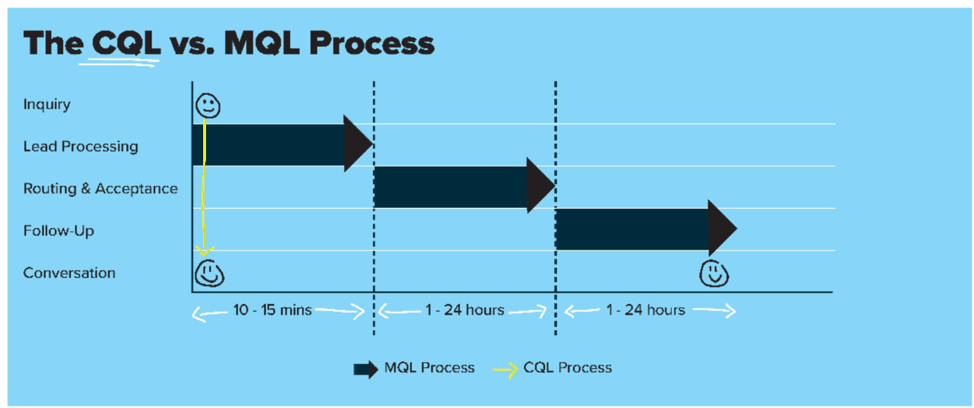
Step 3: Be Personal And Specific
Instead of making people fill out complicated forms, conversational marketing uses personalized chat greetings to reduce touchpoints and initiate real-time interactions.

For anonymous visitors, accessing this location and firmographic data is possible through data scraping tools.
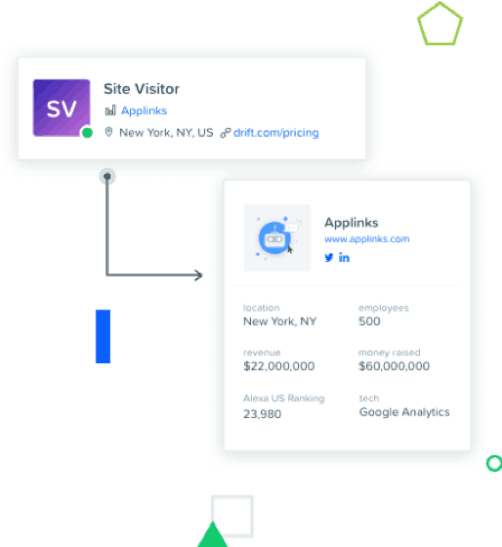
Companies can use similar technology for targeted account-based marketing. At Drift, we trigger notifications to staff when a VIP is on our website. The chatbot also knows to provide a personalized greeting to these visitors.

From there, our salespeople can customize messaging based on where the visitor came from, what page the visitor is on, the frequency of their visit, etc.
Step 4: Use Automation To Scale
Ideally, you should scale personalization efforts where you can.
For large enterprise companies looking to implement personalization globally on their website, creating hundreds of landing pages is an expensive and time-consuming task. Similarly, small businesses or startups with limited resources can’t hope to implement website personalization without some automation resources to help scale.
Artificial intelligence bots, or AI bots, are less intimidating than it sounds. Companies that want to automate aspects of their website personalization can use AI to improve scenarios like the qualification process, for example.
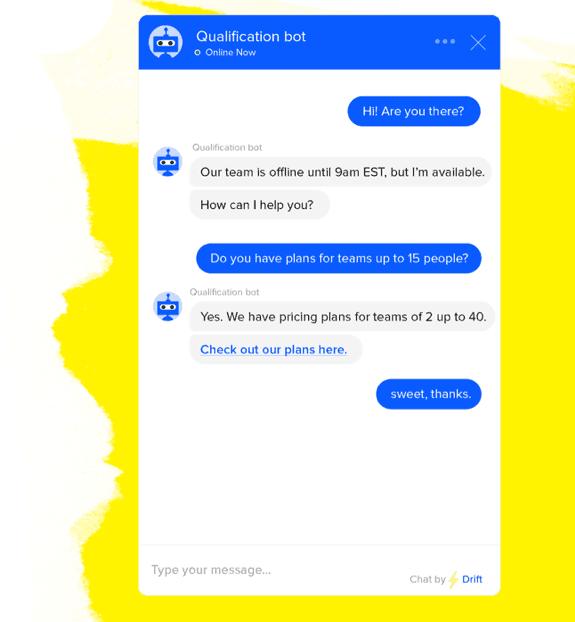
Drift customers use qualification bots built in unison with our Annotation team to streamline and automate typical SDR talk tracks on high-intent webpages. Whether you’re a small or large company, not even your best SDRs can hope to capture conversations 24/7/365.
You Have The Framework, Now Become An Expert
Work smarter, not harder.
We’re sure you’ve heard the phrase. And if there’s anything we hope you take away from this article, it’s that when it comes to website personalization, it’s always better to work smarter.
Conversational Marketing uses a three-principle framework to engage with buyers, understand their pain points and recommend necessary actions. Outside this framework, we suggest that companies looking to scale their website personalization use automation technologies.



